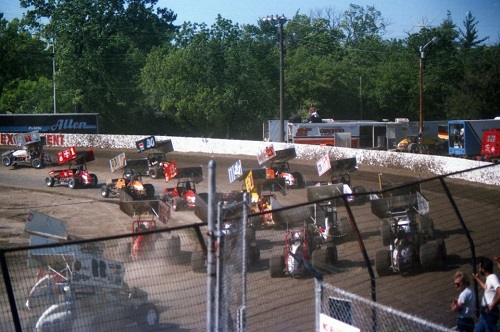SANTA FE SPEEDWAY - WILLOW SPRINGS IL

Carved from the hilly area by teams of horses drawing wheel scrapers, the original track was a quarter-mile in length and featured two grandstands. Early attendees came via the Santa Fe Railroad to view the racing. Other entertainment was offered in the form of a dance hall, beer garden, a bowling alley and other refreshments stands. This track on the Southwest side of Chicago was home to many of Chicago's drivers. Originally built for horses, cars took over as the main attraction in the 1920's. Later that same decade, a tornado took out the original grandstands, and the track was closed. From 1896 until the late 1920's, it was the site of the Santa Fe
Park, a race track originally used for horses. The Santa Fe name came from the Santa Fe Railroad located alongside the property. The son of the original track owner built the Santa Fe Speedway after inheriting the land from his father. After World War II, two new tracks were built on the site. One was a 7/16-mile oval, the other a 1/4 mile oval. This configuration was operational from 1953, until the site was sold for development in 1995. At that time, this was a rural area, but it was eventually swallowed up by the expanding Chicago metro area. Three 200-lap long distance events highlighted the inaugural season at Santa Fe. On July 10, 1954, the first-ever NASCAR Grand National stock car race in the Chicago area took place at Santa Fe with Dick Rathmann winning the 200-lap race and a reported $1,000 for his

efforts. Rathmann, a California native, guided his Pure Oil-sponsored 1954 Hudson to the win over Herb Thomas, Hershel McGriff, Lee Petty, Buck Baker and Jim Reed, all NASCAR regulars. Over 6,000 fans were said to have witnessed the event, which saw Baker, the fastest qualifier, lead the first 46 laps until Rathmann took over. Over the years, stock cars, sprint cars, midgets, and motorcycles raced here. It also was home to team demolition derby events, a local tradition that continues today at Joliet's Route 66 Raceway. The facility sat idle in 1996, 1997 and 1998 and fell to the wrecking ball in March of 1999, making way for a $70 million upscale housing development.
All Photos copyright and are property of their respective owners
